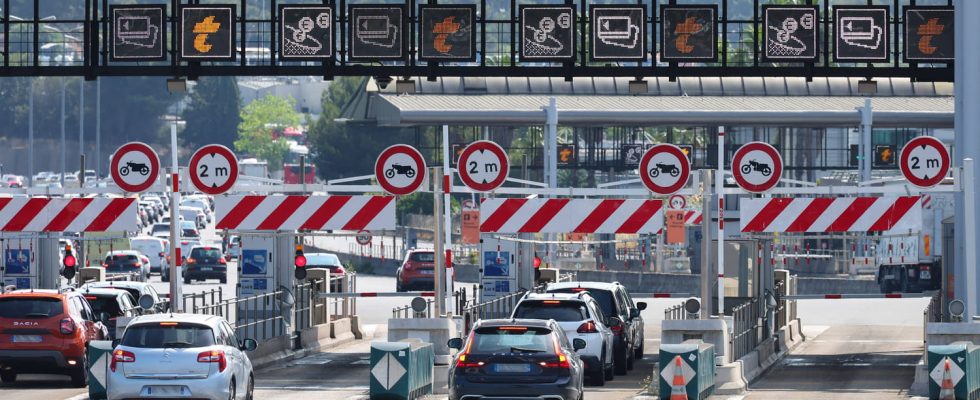Toll prices will increase again in 2024. This price increase, effective from February 1, will be around 3% on average in France. The Ministry of Transport disclosed on January 26 the new increases of the various highway companies.
A short week before the implementation of the new motorway rates, like every year in France on February 1, the Ministry of Transport published a document, Friday January 26, with the evolution of the prices of each motorway company. As Clément Beaune, then Minister for Transport, announced last November, the average increase in toll prices will flirt with 3% this year, quite far from that of 4.75% applied in February 2023.
This new increase in prices, reassessed according to inflation (3.87% over the period) and investments by dealers, is obviously yet another bad news for motorists. Because even if we are quite far from a 5% increase, the threat brandished last year by certain motorway companies in the face of the new tax included in the 2024 budget on long-distance transport infrastructures, including motorways, it the fact remains that motorists will pay even more for their travel from February 1st.
All new motorway tariffs must be approved by the public authorities before being published in the Official Journal.
How much will toll rates increase in 2024?
Here are details of the increases in the various concessions in force from February 1, 2024:
- VINCI (ASF, Cofiroute and Escota): + 2.7%
- SANEF: + 2.79%
- APRR: + 3.02%
- AREA: +3.04%
- SAPN: + 3.08%
- ATMB (Mont-Blanc Tunnel): + 3.23%
- SFTFR (Fréjus Tunnel): + 3.87%
Detailed prices for each section of motorway must be published by motorway companies on their websites and be easily accessible to motorists.
The different classes of vehicles
There are 5 classes of vehicles, each has its own pricing. Be careful especially if you are traveling with a caravan or motorhome… Here are the details.
- Class 1: Light vehicles
Light vehicles are those with a total height less than or equal to 2 meters and a GVWR (total authorized weight) less than or equal to 3.5 tonnes. Sedans, station wagons, convertibles, minivans, 4x4s and small utility vehicles are among them. - Class 2: Intermediate vehicles
Intermediate vehicles are those with a total height greater than 2 meters and less than 3 meters and a GVWR less than or equal to 3.5 tonnes. Class 1 vehicles towing a caravan, motorhomes, large utility vehicles and pick-ups with habitable cells fall into this category. - Class 3: Heavy goods vehicles, coaches and other 2-axle vehicles
These vehicles have a total height greater than or equal to 3 meters or a GVW greater than 3.5 tonnes: heavy goods vehicles, coaches and certain motorhomes, etc. - Class 4: Heavy goods vehicles, coaches and other vehicles with 3 axles or more
These vehicles have a total height greater than or equal to three meters or a GVW greater than 3.5 tonnes. Heavy goods vehicles with 3 axles and more, coaches with 3 axles and more… - Class 5: Motorcycles, sidecars, quadricycles, etc.
What to do in the event of a pricing error?
Most toll booths are equipped with machines that detect the height of the vehicle and apply pricing accordingly. However, detection errors may occur when the vehicle is transporting bulky objects on a roof rack or roof box. If you realize the error when paying, you can contact an employee using the intercom located at the payment terminal. Later, it is always possible to contact the highway management company by mail or via its website.
